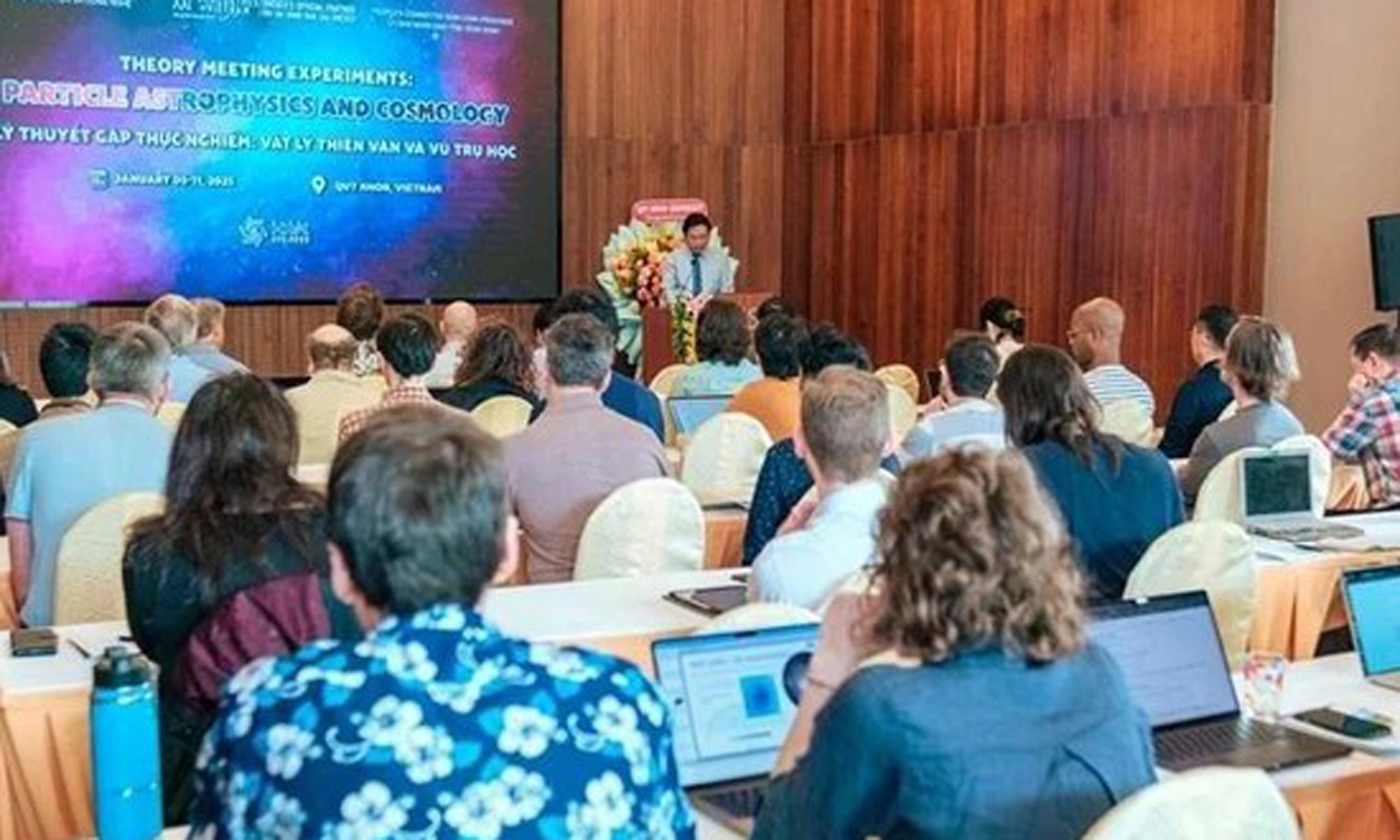Leading astrophysicists, cosmologists gather at Quy Nhon conference
ABO/NDO- The “Theory Meets Experiment: Astrophysics and Cosmology” (TMEX2025) international conference opened in Quy Nhon city in the south-central province of Binh Dinh on January 6.
The event is co-organised by the Rencontres du Vietnam Science Association, the International Centre for Interdisciplinary Science and Education (ICISE), and the Institute for Research on the Fundamental Laws of the Universe (IRFU) under France’s Atomic Energy and Alternative Energies Commission (CEA).
The conference brings together nearly 60 delegates, including experts, scientists, and young researchers from 16 countries, including the US, Morocco, Spain, France, Belgium, Germany, Italy, the United Kingdom, Poland, Pakistan, India, China, the Republic of Korea, Indonesia, Japan, and Australia.
 |
| The event is scheduled to close on January 11. |
In his opening speech, Tran Thanh Son, Deputy Director of ICISE, said that TMEX2025 is the first international scientific conference of 2025. Held biennially, the conference has become a prestigious scientific meeting point for the theoretical and experimental research community in particle physics and cosmology.
Participants shared the latest research findings and explored new directions in astrophysics and cosmology. Key topics discussed included dark matter, gravitational wave detection, and the advancements in multi-messenger astronomy, which present both challenges and opportunities for the scientific research community.
The organisers highlighted that the conference not only fosters international collaboration but also provides a platform for graduate students and young researchers to connect with leading scientists, opening pathways for future development.
The conference features 52 presentations in plenary sessions, covering topics such as cosmology, gamma rays, neutrinos, dark matter, cosmic rays, gravitational waves, future experiments and research facilities, time-domain astronomy, and multi-messenger astronomy.
(Source: NDO)
 về đầu trang
về đầu trang







